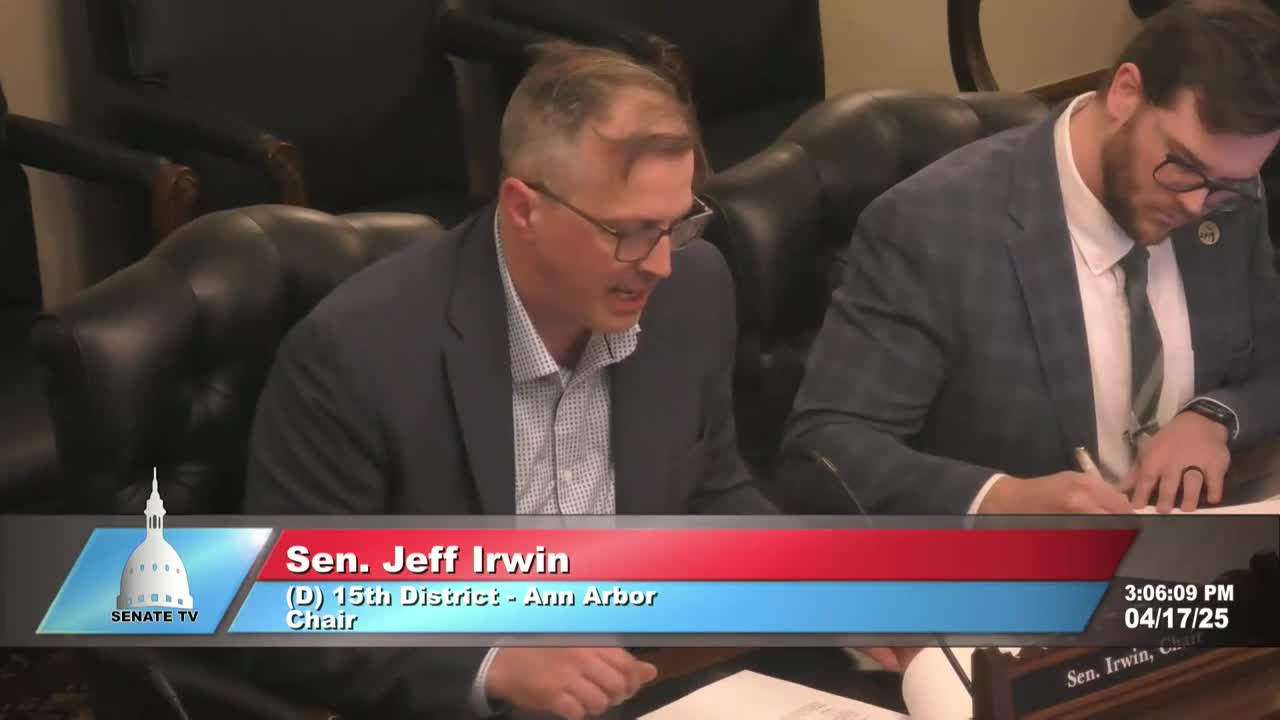EGLE officials present Michigan's contaminated site cleanup challenges and funding needs
April 17, 2025 | Labor , 2025 Senate Legislature MI, Michigan
Thanks to Scribe from Workplace AI , all articles about Michigan are free for you to enjoy throughout 2025!

This article was created by AI using a video recording of the meeting. It summarizes the key points discussed, but for full details and context, please refer to the video of the full meeting. Link to Full Meeting
Mike Neller, Director of the Remediation and Redevelopment Division at the Michigan Department of Environment, Great Lakes, and Energy (EGLE), along with Deputy Director Travis Boscull, presented an overview of the state's environmental cleanup programs. They highlighted the challenges faced in managing these sites, emphasizing the importance of consistent funding to support their efforts.
The presentation outlined four key programs under the division's purview. The first, Part 201 of the Natural Resources Environmental Protection Act, addresses hazardous substance releases into the environment, primarily from industrial and commercial operations. With around 18,000 facilities under this program, many are decades old, and the responsible parties are often long gone.
The second program focuses on leaking underground storage tanks, primarily from gas stations. This initiative aims to manage past petroleum releases, which can pose significant environmental risks. The third program, the Brownfield Redevelopment Program, provides financial assistance for the cleanup of contaminated sites, promoting redevelopment even when no liable party exists.
Lastly, the Superfund program, a partnership with the EPA, targets the most severely contaminated sites. Currently, Michigan has 64 sites on the national priority list, with an average remediation timeline of 40 years. The term "orphan site" was also clarified, referring to locations where the liable party is either defunct or financially incapable of covering cleanup costs, necessitating state intervention.
As the presentation progressed, the stark reality of Michigan's contaminated landscape became evident. A map displayed the widespread nature of these sites, illustrating that while contamination exists, it does not always equate to immediate public health risks. Many sites are vacant or secured, reducing exposure risks.
The meeting concluded with a call to action for continued support and funding for these vital cleanup efforts. With the number of contaminated sites growing annually, the need for a robust and well-funded remediation strategy is essential for protecting public health and revitalizing Michigan's environment. As officials left the meeting, the weight of their responsibility lingered, underscoring the long road ahead in addressing this environmental crisis.
Converted from Labor 25-04-17 meeting on April 17, 2025
Link to Full Meeting
Comments
View full meeting
This article is based on a recent meeting—watch the full video and explore the complete transcript for deeper insights into the discussion.
View full meeting